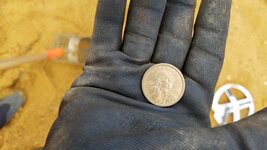shanegalang
Bronze Member
For those of you with experience on beaches, wet and dry sand. Do those programs work pretty good? Do you modify the settings at all? Will the salt cause any damage to the coil? Thanks for any and all input, I will be trying the Deus in Gulf Shores this upcoming week end. I am usually a land relic hunter and of course know how well the Deus does there. Thanks....Shanegalang






